During the winter months, it becomes clear why evergreens are so important. While all those pretty perennial flowers are dormant, evergreens stand strong, unphased by the cold weather. Evergreen plants give gardens color and shape when the dominant color of the winter season is brown. And, unlike deciduous plants that shed their leaves all at once when the cold hits, evergreen plants shed their leaves a few at a time over the whole year while still maintaining all the remaining leaves. As a flower lover, I completely understand the desire to have a garden chock full of flowers! Well, with flowering evergreen plants, you can have the best of both worlds. Evergreen foliage for the long winter months, and then flowers come spring or fall.
Table of Contents
Trees
What most people think of when they think of evergreens, trees are only just the beginning of evergreen plants. While there are a wide variety of evergreen trees, very few produce flowers. Luckily for us, one of the few that does is pretty impressive!
Magnolia grandiflora – the Southern Magnolia produces flowers that live up to to its name – they sure are grand!

Acacia trees can also be evergreen depending on the variety and climate, and they produce yellow flowers while maintaining evergreen foliage. They are also incredibly water-wise. Acacia stenophylla, Acacia aneura, and Acacia salicina are all evergreen varieties.
Shrubs

Flowering evergreen shrubs truly are the best of both worlds. They provide evergreen foliage for foundation plantings, give height and structure to your garden, and as an added bonus, flower in the spring or fall.
Azaleas – Azaleas have been a staple of the South for a while, and Azalea festivals abound. I still remember a track meet I ran at in high school called the Azalea Invitational in Summerville, South Carolina. We visited Azalea Park, and it was in full bloom. Even this moody high schooler was impressed. We take our azaleas pretty seriously here! Make sure to check that you have bought an evergreen variety rather than a deciduous variety. Encore Azaleas and other reblooming Azaleas are evergreen. Most azaleas that you find at garden centers are evergreen. Don’t let the scientific name confuse you. All azaleas have Rhododendron as the genus name. For example, the Azalea Autumn Ruby’s scientific name is Rhododendron ‘Conler’. Every azalea is a rhododendron, but not every rhododendron is an azalea (similar to squares vs. rectangles).
Rhododendrons – Rhododendrons are another flowering evergreen, but do best in shady locations. Rhododendrons can get pretty big, so give them room to grow or be prepared to fight a losing battle.
Camellias – Camellias are increasing in popularity, and for good reason. Their blooms are incredible. And, they just so happen to bloom when not much else is blooming (late fall, winter, early spring).
Gardenia – another southern staple, Gardenias do better in southern hardiness zones (8-11, though some varieties claim zone 7 hardiness…I remain unconvinced). Their flowers have a wonderful perfume – whenever I smell gardenia, I think of my grandmother, who grew them in her greenhouse to protect them from the cooler Tennessee winter temperatures. I did not have much success growing them, probably because it needed a little more TLC than I was willing to give it. I should have done a little more research before planting it.

I’m pretty obsessed with camellias… 
…for obvious reasons
Perennials
There are herbaceous perennials and evergreen perennials. With herbaceous perennials, the flowers and foliage both die back and go dormant during winter. Evergreen perennials retain their foliage year round, even after the flowers have died.
Dianthus – also known as Pinks. At a plant swap I was trading with someone and I asked him what the plant was and he said Pinks. I thought he meant that the flower was pink, and I was like, “Pink what?” And he repeated, they’re called Pinks. I was like “Pink?” No. Pinks. It was a comedy of errors. I later googled Pinks and learned that was the common name for Dianthus. I’m always learning something! Long story short, Dianthis have low, evergreen foliage that would be perfect for the front of the border, and cute, pink (or white) flowers.

Creeping Phlox – Creeping phlox is good as an evergreen groundcover that also provides pretty flowers in the spring. It would also be good at the front of borders or between plants in your garden.
Lenten Rose or Hellebores – This plant checks a lot of boxes. Evergreen – check. Variety of flower color options – check. Flowers in late winter/early spring – check. Shade plant – check. Just get some already.
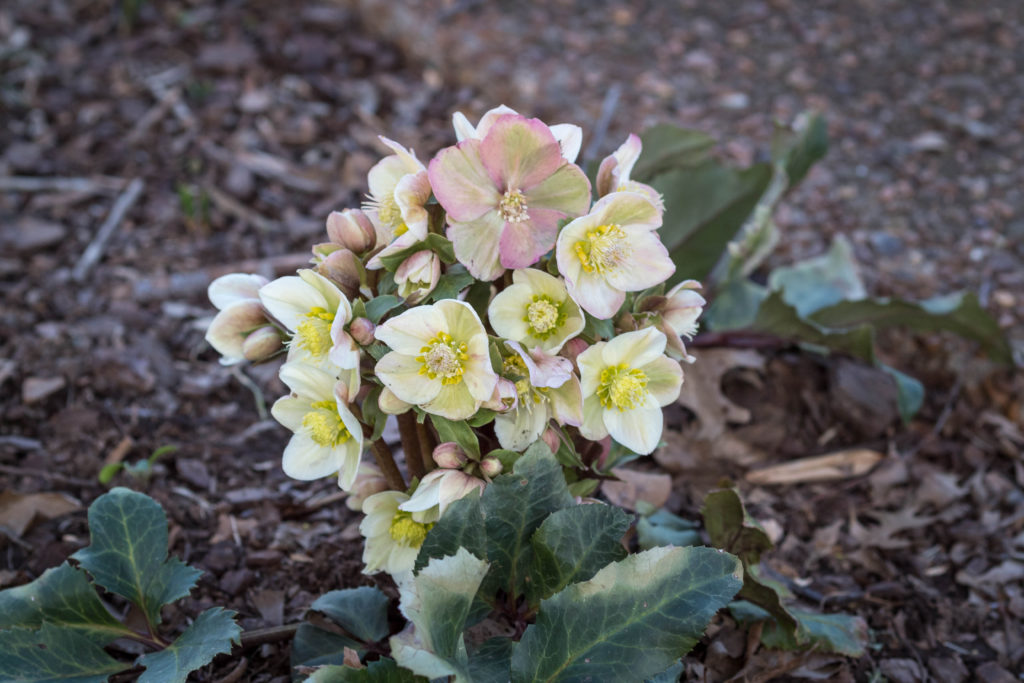
Chrysogonum (Golden Star) – Another plant that does well in shade, it has low-growing, clumping foliage with small yellow stars. You can get it from Bluestone Perennials.
Arabis (Rockcress, Mountain Rock, Wallcress) – I ordered seeds from Swallowtail since I need to cover a large area, and therefore need a lot of plants.
Iberis (Candytuft) – Google “Candytuft” to rock your socks off. The white flowering varieties are packed with blooms. I ordered seeds from Swallowtail to get more bang for my buck. I’ll let you know how they turn out!
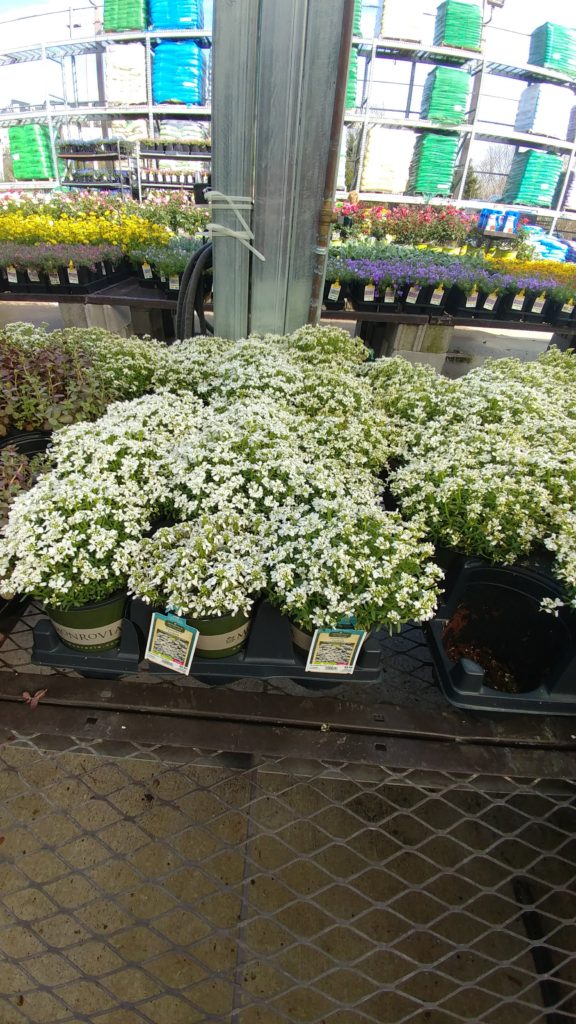
Golden Alyssum (Aurinia saxatilis) – low growing, covered with yellow flowers. It’s also called Basket-of-gold for a reason! I purchased seeds from Swallowtail, again, because I’m trying to be economical, although I’m not sure Paul would see it that way.
Viola – some varieties are evergreen. Also make sure that you don’t get the wild violas/violets. Those get out of control easily and can be a PAIN to remove, i.e. you have to dig them up since they spread by rhizomes. Unless you like them, in which case, go wild.
Lavender Cotton (Santolina Ericoides) – Button-like flowers similar to mums, but smaller. You can find them at Bluestone Perennials.
Sea Thrift (Armeria maritima) – long stems on the flowers with clumping foliage. Very pretty and can also be found at
Liriope – not the most exciting flowers, but hey, flowers are flowers.
Vinca minor (Periwinkle) – can be considered invasive in some parts, but if you can keep it contained, it provides an excellent groundcover and cute blue-purple flowers in the spring
Heuchera (or Coral Bells) – though most people probably aren’t buying heuchera for the flowers – they do flower! And the retain their foliage year round in many zones
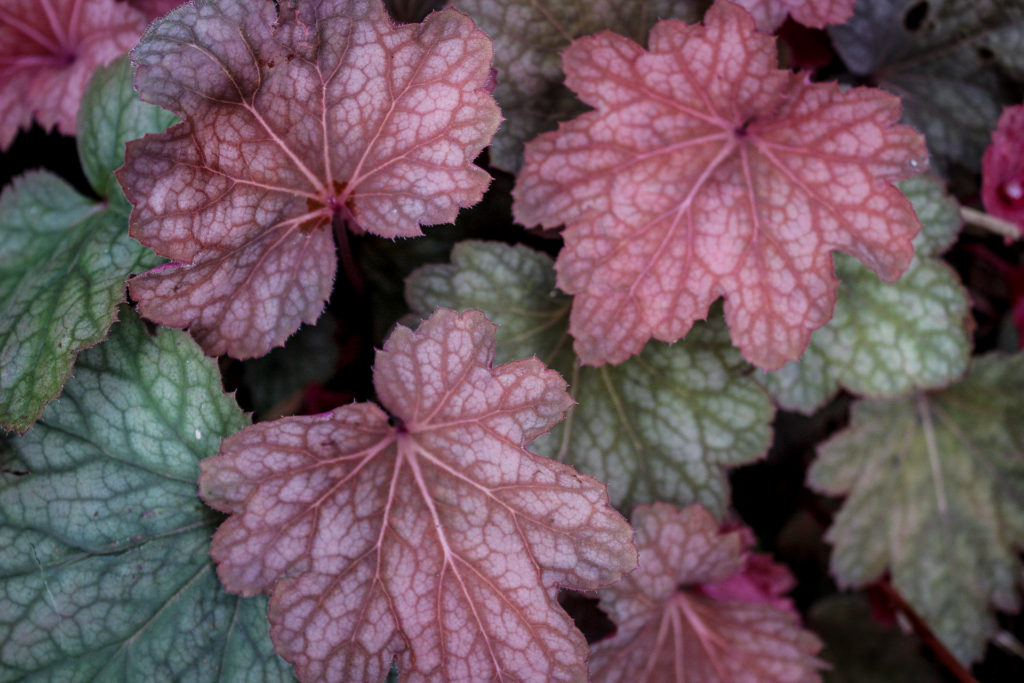
Lamb’s Ear – again, they are more notable for their foliage (and texture), but they do flower, and the bees LOVE it. I would try to cut back the dead flower stalks but had to retreat sometimes due to how many bees there were around them.
Do keep in mind that one man’s groundcover is another man’s weed/invasive plant. Some people like Vinca. Other people curse the day it was introduced in their garden.
Vines
Evergreen clematis – Most varieties of clematis are deciduous, but there are a couple evergreen varieties – Clematis armandii and Clematis cartmanii
Carolina Jessamine – evergreen foliage with yellow trumpet flowers in the spring.
I hope this gives you some ideas to start with in designing your garden to include evergreens! As mentioned before, evergreens are vital to provide color to your garden in the winter. Flowering evergreens give you evergreen foliage to provide color in the winter, and flowers for even more color in spring, summer, or fall. I love flowers, so these plants do double duty in my garden. Do you have any of these in your garden? Do you prefer flowers or foliage? Or both? 😉
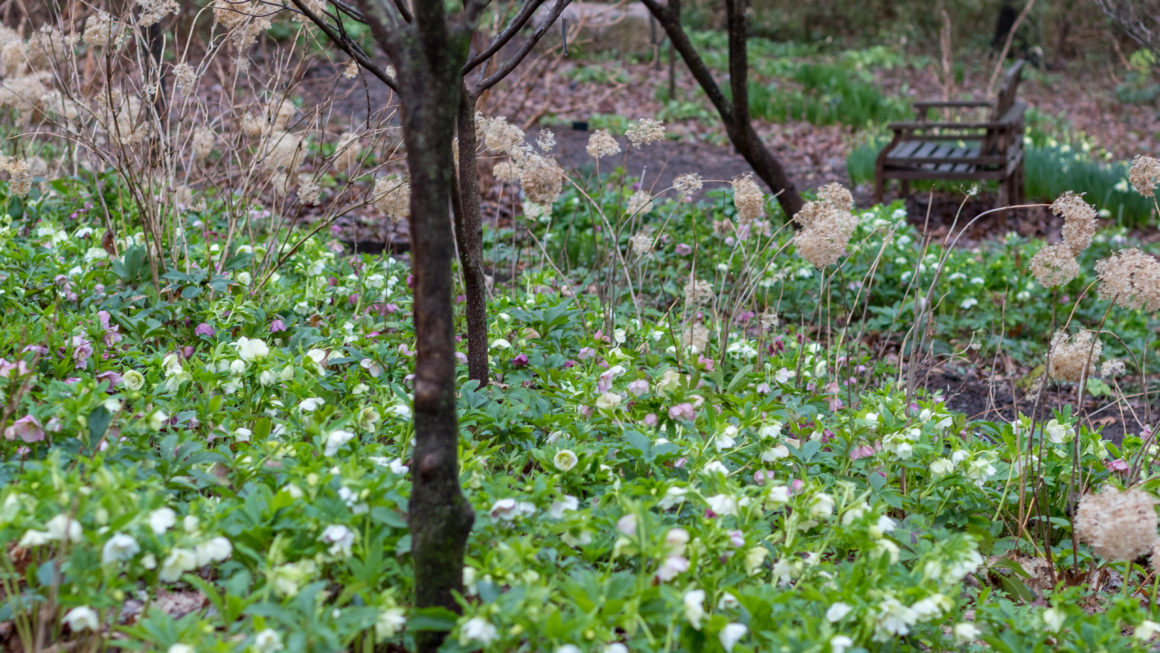
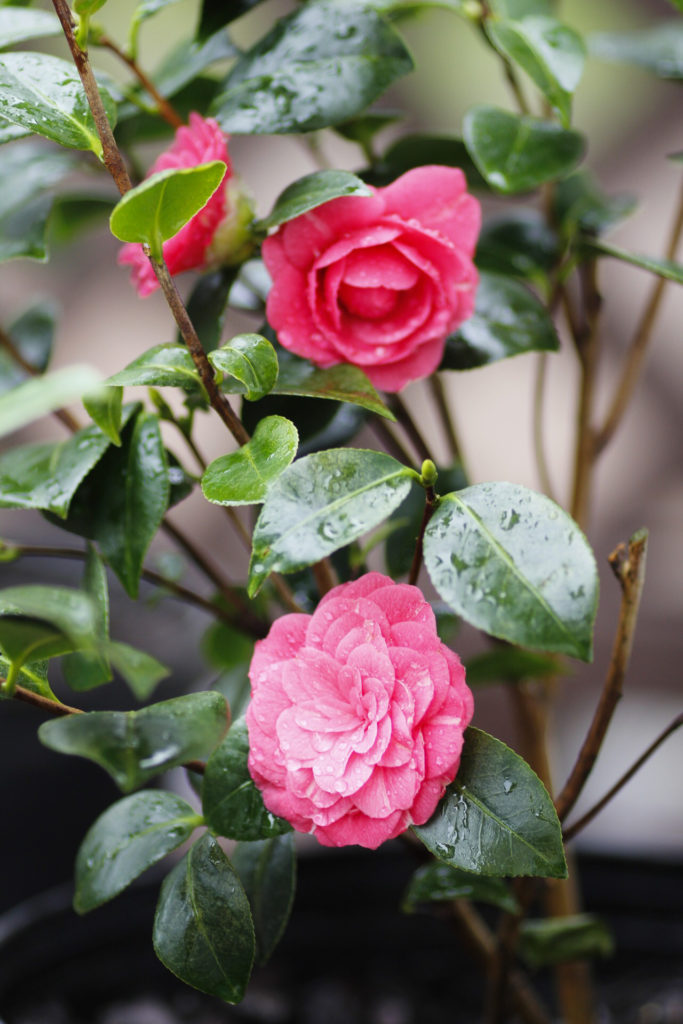
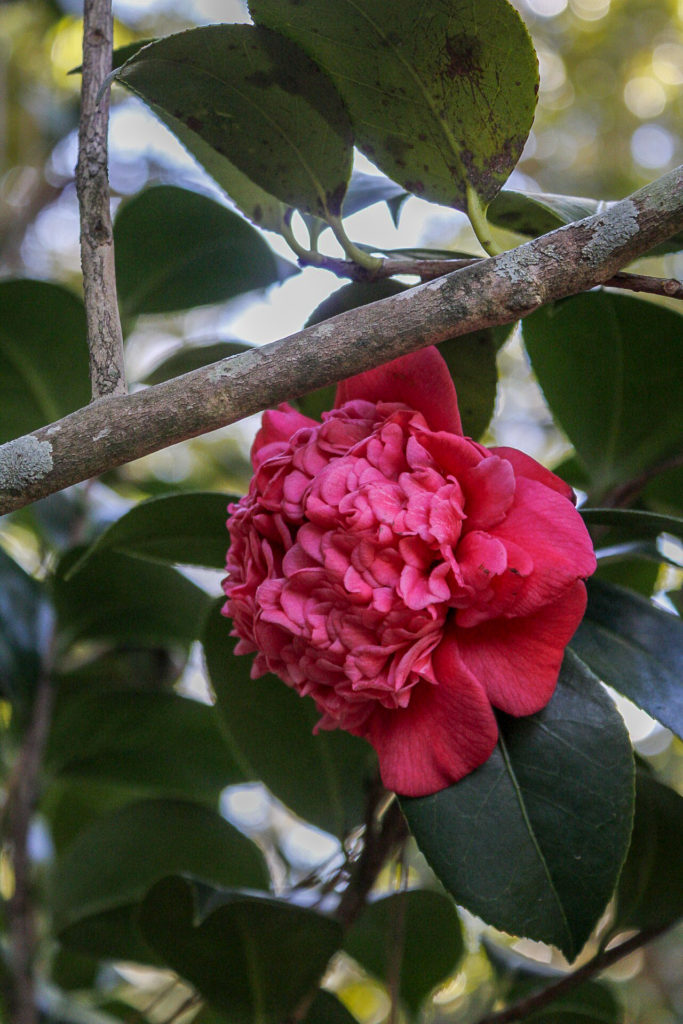
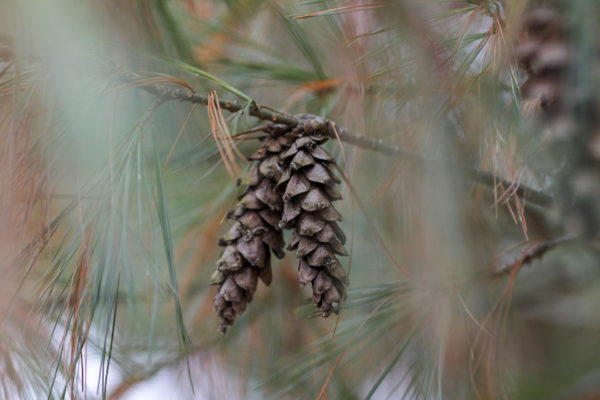

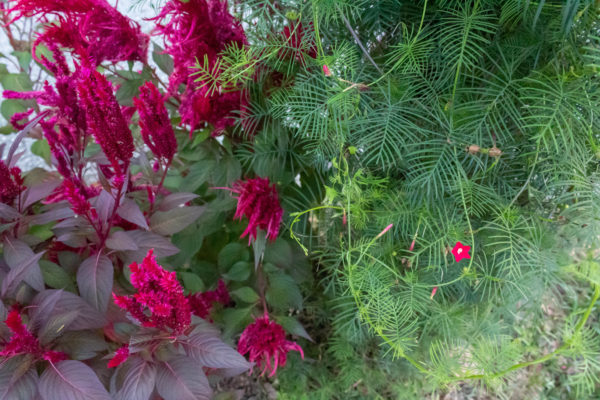
Your ideas are unique and we impressed with your stuffs. We also work with you.